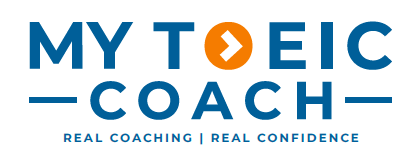🟧 Mastering TOEIC Part 2
The Right Answer Sounds Wrong
In Part 2, you get one short question, three possible answers, and no repeats.
It sounds simple — but TOEIC makes the correct answer feel wrong on purpose.
If you’ve ever thought, “That can’t be right…” and skipped it, you’ve probably thrown away the point. This section is about training your ear — and your logic — to choose what fits, not what feels comfortable.
🎯 Why Part 2 Feels Tricky
Part 2 isn’t a natural conversation. It’s a logic filter.
Two of the three answers are designed to sound familiar or polite. The real answer? Often short, awkward, or unexpected — but it actually answers the question.
🧠 Example
Q: “Where is the meeting being held?”
❌ “Yes, I heard about that.” — Friendly, but doesn’t answer.
✅ “On the third floor.” — Short and correct.
❌ “No, I don’t think so.” — Conversation-like, but irrelevant.
🎣 The 3 Classic Part 2 Traps
Keyword Echoes — Repeats a word from the question but changes the meaning.
Q: “When is the deadline?”
A: “Yes, the line is long.” ❌ (Keyword match, wrong meaning)Grammar Mirrors — Copies the question’s tense or structure without adding useful information.
Q: “Did you send the file?”
A: “Yes, I did.” ❌ (Too vague; TOEIC prefers specifics)Similar Sounds — Plays on words that sound alike but are unrelated.
Q: “Did he book the room?”
A: “He looked at the broom.” ❌ (Pure distraction)
🚧 Common Trap Patterns
Echo traps: “Did you hear the announcement?” → “Yes, I heard it too.” ❌
Short-answer traps: “No, she didn’t.” ❌ (Grammatically fine, too vague)
Feel-good replies: “That’s interesting.” ❌ (Friendly, irrelevant)
Sound-alike traps: “Did she attend the fair?” → “Yes, the chair is there.” ❌
🛠️ Strategy to Beat Part 2
Forget what sounds right — TOEIC logic ≠ casual English.
Ignore anything that mirrors the question — repeated words are usually bait.
Choose the option that answers the question logically — even if it sounds awkward.
If two choices sound right, they’re probably both wrong.
If one feels “off” but still answers, it’s likely correct.
💡 The Yes/No Twist
Yes/No questions rarely have “yes” or “no” as the answer.
Instead, TOEIC often uses:
“Let me check.”
“It was handled this morning.”
“I’m not sure yet.”
They feel incomplete, but they answer logically — and that’s what scores.
Final Word
Part 2 rewards logic over instinct. The sooner you stop chasing the “friendly” or “familiar” reply, the faster you’ll collect more points.
For more strategies and resources to sharpen your TOEIC listening logic, visit the English Library Collection and start mastering Part 2 with confidence.

